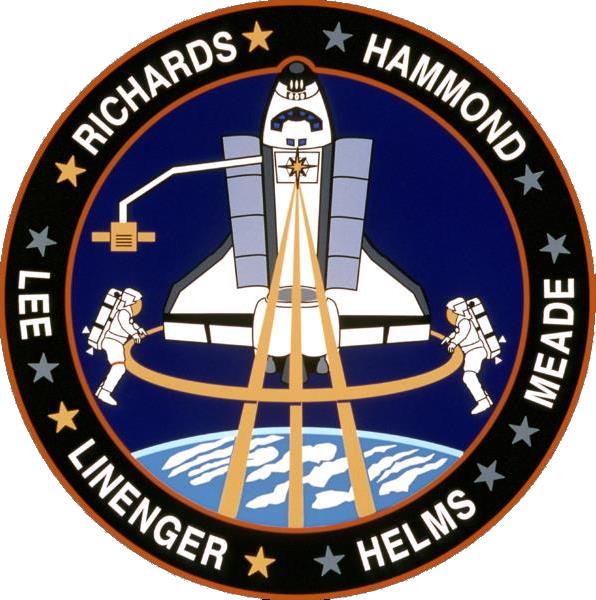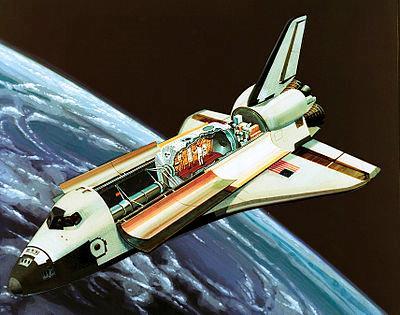Susan J. Helms
Spacelab 020 - STS-64
Mission Name: LITE
Astronauts:
Command Pilot:
Richard N. Richards
(Fourth Space Flight)
Pilot:
L. Blaine Hammond Jr.
(Second Space Flight) Mission Specialist 1:
Jerry M. Linenger
(First Space Flight) Mission Specialist 2:
(Second Space Flight)
Mission Specialist 3:
Carl J. Meade
(Third Space Flight) Payload Specialist 4:
Mark C. Lee
(Third Space Flight)
Spacelab was a reusable laboratory used on certain spaceflights flown by the Space Shuttle. The laboratory comprised multiple components, including a pressurized module, an unpressurized carrier and other related hardware housed in the Shuttle's cargo bay. The components were arranged in various configurations to meet the needs of each spaceflight.
Spacelab components flew on 22 Shuttle missions between November 1983 and April 1998. Spacelab allowed scientists to perform experiments in microgravity in Earth orbit.
STS-64 marked first flight of Lidar In-space Technology Experiment (LITE) and first untethered U.S. extravehicular activity (EVA) in 10 years. LITE payload employs lidar, which stands for light detection and ranging, a type of optical radar using laser pulses instead of radio waves to study Earth's atmosphere. First spaceflight of lidar was highly successful technology test. LITE instrument operated for 53 hours, yielding more than 43 hours of high-rate data. Unprecedented views were obtained of cloud structures, storm systems, dust clouds, pollutants, forest burning and surface reflectance. Sites studied included atmosphere above northern Europe, Indonesia and the south Pacific, Russia and Africa. Sixty-five groups from 20 countries are making validation measurements with ground-based and aircraft instruments to verify LITE data. LITE science program is part of NASA's Mission to Planet Earth.
Mission Specialists Lee and Meade completed the 28th EVA of the Space Shuttle Program on Sept. 16. During six-hour, 15- minute EVA, they tested new backpack called Simplified Aid for EVA Rescue (SAFER), designed for use in event crew member becomes untethered while conducting an EVA.
On fifth day of the mission, the Shuttle Pointed Autonomous Research Tool for Astronomy-201 (SPARTAN-201) free flyer was released using Remote Manipulator System arm. Making its second flight on the shuttle, SPARTAN-201 was designed to collect data about acceleration and velocity of solar wind and to measure aspects of sun's corona. Data recorded for playback after return to Earth. SPARTAN-201 retrieved after two days of data collection.
Other cargo bay payloads: Shuttle Plume Impingement Flight Experiment (SPIFEX), a 33-foot (10-meter) long instrumented extension for the shuttle robot arm. SPIFEX designed to collect data about orbiter Reaction Control System (RCS) thrusters to aid understanding about potential effects of thruster plumes on large space structures, such as Mir space station or planned international space station. Robot Operated Processing System (ROMPS) was first U.S. robotics system operated in space, mounted in two Get Away Special (GAS) canisters attached to cargo bay wall. A GAS bridge assembly in cargo bay carried 12 cans, 10 holding self-contained experiments.
Middeck experiments included: Biological Research in Canister (BRIC) experiment to investigate effects of spaceflight on plant specimens; Military Application of Ship Tracks (MAST) to take high-resolution imagery of ship tracks and to analyze wake formation and dissipations; Solid Surface Combustion Experiment (SSCE) to supply information on flame propagation over fuels in space; Radiation Monitoring Equipment III (RME III) to measure ionizing radiation; Shuttle Amateur Radio Experiment II (SAREX II) to demonstrate feasibility of short-wave radio contacts between orbiter and ground-based amateur radio operators; and Air Force Maui Optical Station (AMOS) test, which required no onboard hardware.

Spacelab Space Missions
Study Research
Space Cosmology
Science Research
*
About
Science Research
Science Theories
Site Map
BookShelf
Desk
Copyright © by Nigel G Wilcox · All Rights reserved · E-Mail: ngwilcox100@gmail.com
Designed by Nigel G Wilcox
Powered By AM3L1A
Pages within this section: Spacelab 01-32
Spacelab B11-20
Sub-Menu
11
M
menu
12
13
14
15
16
17
8
19
20
18
>>>
C
SM









